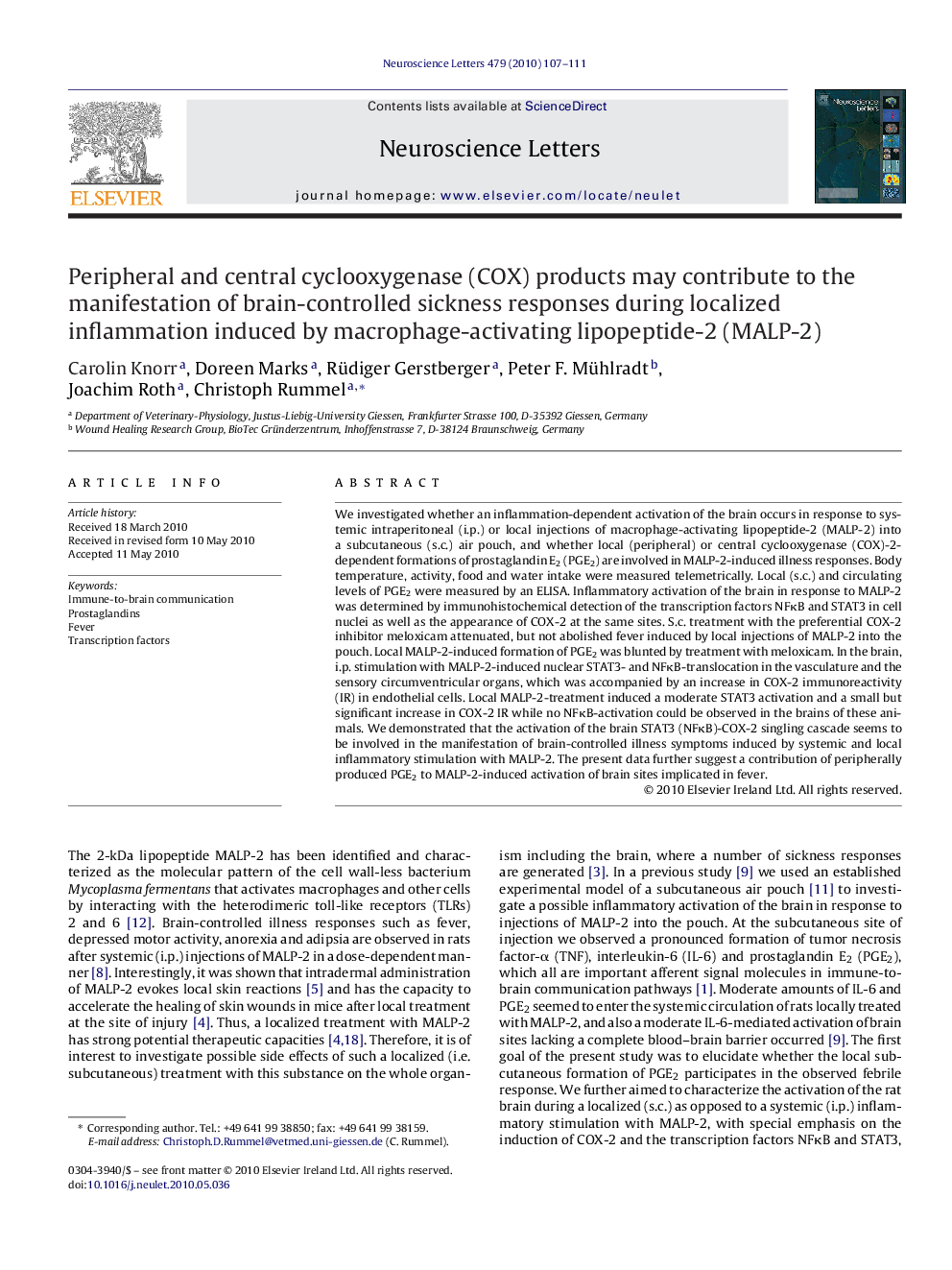| Article ID | Journal | Published Year | Pages | File Type |
|---|---|---|---|---|
| 4345714 | Neuroscience Letters | 2010 | 5 Pages |
We investigated whether an inflammation-dependent activation of the brain occurs in response to systemic intraperitoneal (i.p.) or local injections of macrophage-activating lipopeptide-2 (MALP-2) into a subcutaneous (s.c.) air pouch, and whether local (peripheral) or central cyclooxygenase (COX)-2-dependent formations of prostaglandin E2 (PGE2) are involved in MALP-2-induced illness responses. Body temperature, activity, food and water intake were measured telemetrically. Local (s.c.) and circulating levels of PGE2 were measured by an ELISA. Inflammatory activation of the brain in response to MALP-2 was determined by immunohistochemical detection of the transcription factors NFκB and STAT3 in cell nuclei as well as the appearance of COX-2 at the same sites. S.c. treatment with the preferential COX-2 inhibitor meloxicam attenuated, but not abolished fever induced by local injections of MALP-2 into the pouch. Local MALP-2-induced formation of PGE2 was blunted by treatment with meloxicam. In the brain, i.p. stimulation with MALP-2-induced nuclear STAT3- and NFκB-translocation in the vasculature and the sensory circumventricular organs, which was accompanied by an increase in COX-2 immunoreactivity (IR) in endothelial cells. Local MALP-2-treatment induced a moderate STAT3 activation and a small but significant increase in COX-2 IR while no NFκB-activation could be observed in the brains of these animals. We demonstrated that the activation of the brain STAT3 (NFκB)-COX-2 singling cascade seems to be involved in the manifestation of brain-controlled illness symptoms induced by systemic and local inflammatory stimulation with MALP-2. The present data further suggest a contribution of peripherally produced PGE2 to MALP-2-induced activation of brain sites implicated in fever.
